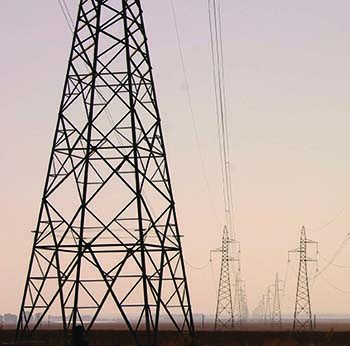
Photo: Leonie Bolleurs |
Since 2008, the University of the Free State has been busy with the planning and implementation of projects to reduce the impact of load shedding. To date, the cost of these projects has run to R6 million. They have been done primarily to ensure that the academic programme does not suffer damage as a result of the increasing interruptions in the power supply that are continuing this year.
The university’s greatest concern has been the provision of emergency power to the lecture halls and laboratories.
Thus far, 35 generators are servicing 55 buildings on the three campuses of the UFS. This includes 26 generators on the Bloemfontein Campus, eight on the Qwaqwa Campus in the Eastern Free State, and one generator on the South Campus in Bloemfontein. The generators are already in service, and are maintained in working order.
Since 2010, the university has also ensured that all newly-built academic buildings are equipped with emergency power supplies.
On the South Campus in Bloemfontein, the new lecture-hall building and the computer laboratory are equipped with emergency power, while the installation of emergency generators in other buildings is under way. The majority of the buildings on the Qwaqwa Campus in the Eastern Free State are equipped with emergency power supplies.
In the meantime, the UFS management has approved a further R11 million for the installation of additional generators on the three campuses. A further R1.5 million has also been approved for the purchase of two mobile generators.
To extend the work already done, the main task will be the installation of more generators on the Bloemfontein Campus to ensure that lecture halls with emergency power will be available for the centrally-arranged timetables, and to ensure that more of the critical laboratories will be provided with emergency power.
There are still some important buildings and halls on the Bloemfontein Campus that must be supplied with emergency power. However, it is a costly process and must be brought into operation gradually. The further implementation of emergency power depends on the delivery of equipment. The university is also investigating alternative solutions for power provisioning, including solar power.
Generators with spare capacity are optimally deployed to satisfy the lower needs of the campus, including the Odeion, the ANNEX at Microbiology, the Stabilis ANNEX, the Agriculture Building, the UV-Sasol library, and the Francois Retief Building.
In addition, the UFS is busy on all campuses, coupling area lighting, including
street lights and pedestrian walkways, to existing generators. Procedures for the operation of mechanical equipment, such as entrance gates, lifts, and so on, are currently being dealt with on all campuses. Continuous power sources for certain ICT equipment will be installed on all campuses to protect it against power surges.
Staff and students can also equip themselves with the necessary knowledge to manage load shedding in their specific areas of work and study. It is always helpful to know who to contact. The following list with guidelines and contact numbers has been compiled to assist you:
1. In an emergency, call Protection Services. This line will continue to operate, regardless of whether the power is on or off.
2. Avoid using lifts just before planned load shedding. Some lifts have emergency power packs which will bring the lift to the nearest floor and open the doors. If you still get stuck in a lift during a power outage, use your cellphone to call Protection Services. While you're waiting, stay calm and be patient.
3. If the access control systems in your building stop working after load shedding, contact Protection Services.
4. The students and staff members who are most at risk during load shedding are those in wheelchairs or with other mobility limitations. As far as possible, plan ahead to avoid being stuck on a floor or in a room that is difficult to access when load shedding is imminent. Please contact Protection Services if you need assistance.
5. During a fire, alarms WILL go off. Alarms are not power driven, but battery driven. For assistance, contact Protection Services.
6. The main UFS Switchboard (Bloemfontein Campus +27(0)51 401 9111 and Qwaqwa Campus +27(0)58 718 5000) will continue to operate during load shedding.
Contact details of Protection Services:
- Bloemfontein Campus: +27(0)51 401 2634/2911
- Qwaqwa Campus: +27(0)58 508 5460/5175
- South Campus: +27(0)51 5051217
Communication and Brand Management will make information available on the UFS web, Facebook page, Twitter, Blackboard and the intranet. Get the load shedding schedule from Eskom’s webpage (http://loadshedding.eskom.co.za/). The Bloemfontein Campus falls in group 4 and the South Campus falls in group 2 in Centlec’s load shedding schedule.